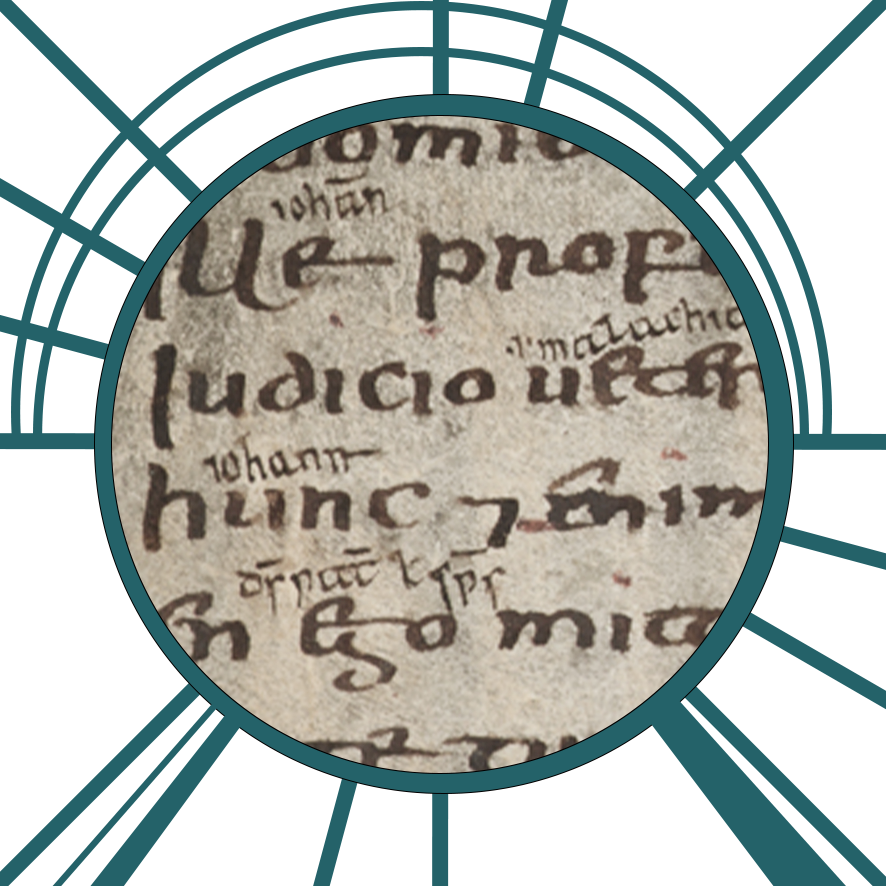
-
Texts
- C. Vettius Aquilinus Juvencus
- Sedulius Presbyter
- Heptateuch poet
- Pontius Meropius Paulinus episcopus Nolanus
- Aurelius Prudentius Clemens
- Proba
- Orientius
- Claudius Marius Victorius
- The database
- Bibliography
OverviewThe project “Latin Biblical Poetry in Antiquity and the Middle Ages (4th – 13th Century) between Intertextuality and Reception in Grammar”, funded by the Deutsche Forschungsgemeinschaft and the Agence Nationale de la Recherche, is being realised by an international group of researchers. The aim of the project is to investigate fundamental aspects of the osmotic relationship between the development of exegesis and theology in the increasingly Christianised European cultural area and the renewal of poetry and its classical canon of forms based on literary evidence. The focus is on the complex structures of intertextuality in biblical poetry. The referential framework is not only the relationship to classical pagan poetry (e.g., in contemporary discourse or theological questions), but also the so far little-researched context within Christian poetry itself: How does a work become a reference text, indeed an unavoidable point of reference for later authors? There is also a lack of research into the influence of Christian poetry on the transformation of classical culture in late antiquity and the Middle Ages. The question arises about the perception of a discrepancy between classical, educated poetry and popular culture, especially in the context of existing educational structures. The project also examines the strategies used by authors to come into contact with their audience and their poetic self-authorisation and self-representation – for example as vates. By placing poetry and theology in dialogue here, it is possible to recognise the close connection between literary-aesthetic selection processes and theological considerations of objectives – factors that are often considered separately in monodisciplinary studies. To this end, the effect of biblical poetry on later theological thinking is analysed. It has a twofold function: an aesthetic one, namely, to improve the stylistic register of the rather sober theological prose treatises, and an authoritative one, which concerns poets such as Juvencus and Sedulius – undeniably orthodox and already approved by the Church Fathers. From the special perspective of biblical poetry, literary, dogmatic, and historical continuities as well as breaks in tradition between antiquity and the Middle Ages can be analysed in a way that cannot be observed elsewhere. The project shows how closely philological research into the history of texts is linked to an understanding of intellectual and cultural history as a whole. |
DatabaseBased on the example of Juvencus’ Evangeliorum Libri Quattuor (around 330), the reception structures of a form-giving late antique biblical epic are reconstructed. Its wide circulation in the Middle Ages is beyond question; the accessible manuscript tradition goes back to the sixth century. With his harmonising paraphrase of the four Gospels, Juvencus stands at the beginning of Latin biblical poetry and creates a work with a far-reaching programme in the formal tradition of epic poetry. This database helps to create a broad overall image of how the Christian poet Juvencus can assume the multifaceted role of a classic in late antiquity. To this end, his after-effects in Christian poetry up to the end of antiquity are systematically recorded in order to work out quantitative and qualitative characteristics of his reception and in order to present items, which serve as a basis for profound interpretations. In addition to analysing simile apparatuses and indices imitationum of critical text editions, that are generally accepted as standard, it is planned to examine relevant commentaries and research literature and extract the references to Juvencus given there. The oldest marking of the reference as well as further important literature are recorded and offered for further reading. In addition, references are given that become evident in the context of our research activities. Potential references will be for example found and checked using various software programmes (for example Tesserae and Musisque Deoque). The bibliographical details are updated on an ongoing basis. In addition to the listing of verse information that can be linked to each other, the texts and further details on the possible references are provided: As well as verbatim and synonymous quotations, common arrangements of an identical motif can also be an indicator of Juvencus’ reception. An overview of the current catalogue of motifs can be found here. A closer examination of the use of different circulating versions of the Bible is elementary for understanding the poetic texts: Do the pretext (i. e. the Evangeliorum Libri Quattuor of Juvencus) and the receiving text refer to a passage in the Bible? And if they both do, do they also refer to the same passage? The biblical text of the Vulgata is offered for standardised orientation and for comparison. The role of previous poetic works may also be relevant in evaluating the relevance of the match. Therefore, previous results of the word combinations in question that may have been considered in Juvencus’ poem are listed. |

|

|
Technical overviewStefan Freund and Philipp Buckl, University of Wuppertal, have imagined the Vestigia Iuvenci database with the aim of highlighting the intertextualities present in the Evangeliorum Libri Quattuor by C. Vettius Aquilinus Iuvencus (see above). Bruno Bureau and Inès Burri, University Jean Moulin Lyon 3, are collaborating on the digital execution of this project, which is based on two essential components:
|
About HeuristHeurist is an open source mySQL database software developed by Ian Johnson at the University of Sydney and hosted in France by Huma-Num. Designed to facilitate the rapid and efficient creation of databases in all areas of Humanities and Social Sciences research, Vestigia Iuvenci would never have seen the light of day without the essential help of its creator and his team. 
|